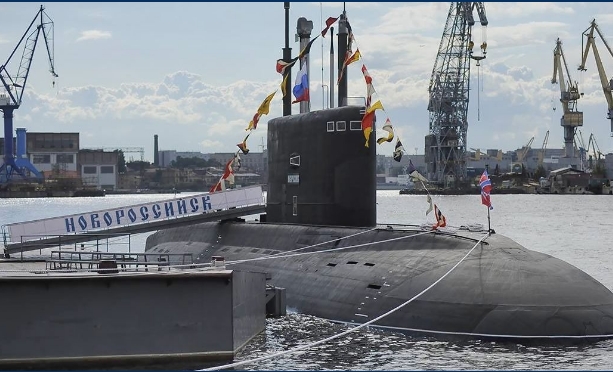Submarine Emergency in the Mediterranean: russian vessel at risk of explosion

A Russian kilo-class submarine belonging to the black sea fleet, the Novorossiysk, reportedly surfaced unexpectedly near the Strait of Gibraltar following a critical fuel system malfunction while operating in the Mediterranean Sea. Sources claim a fuel leak has created an explosive hazard within the vessel’s hold, forcing the crew to consider immediate emergency measures, including the potential discharge of volatile fuel into the ocean.
The critical failure of the Novorossiysk
The incident involving the Novorossiysk, a sophisticated diesel-electric attack submarine, is raising serious concerns among military observers. The vessel, a formidable 74-meter-long asset for the russian navy, is designed for extended covert missions and can carry deadly nuclear Kalibr missiles. Its abrupt surfacing on Friday, reportedly above the Strait of Gibraltar, signals a major operational crisis.
According to exclusive reporting from the russian telegram channel vchk-ogpu, the core of the problem lies with a critical malfunction in the fuel system. This failure has caused diesel fuel to leak directly into the hold, the lower compartment of the ship. This isn’t just a technical snag; it’s a rapidly escalating danger. The accumulation of fuel, a highly volatile substance, is now presenting a significant and immediate explosive risk to the vessel and its crew.
The gravity of the situation is compounded by the submarine’s current deployment status. Operating far from its home port, the vessel reportedly lacks the necessary spare parts and qualified repair specialists to fix the catastrophic leak at sea. This absence of immediate technical support leaves the 52-member crew in a precarious position, battling a potentially explosive environment in isolation.
high-stakes choices for the crew
The crew of the Novorossiysk is now faced with a high-stakes decision to prevent a catastrophic explosion. vchk-ogpu suggests that the most urgent, and perhaps only, viable option is to begin “pumping out the hold.”
This procedure involves discharging the accumulated, explosive fuel directly into the sea. While an unavoidable step to protect the lives of the sailors and prevent the total loss of the billion-dollar vessel, such an action would undoubtedly have significant environmental implications for the sensitive Mediterranean waters near the Strait of Gibraltar.
The Novorossiysk, launched in August 2014, represents the newer, modernized component of Russia’s underwater fleet. Its design allows it to remain submerged for up to 45 days, making its forced surfacing a clear indicator of a severe, uncontrollable emergency. The incident highlights the inherent risks of operating complex military hardware and the constant, underlying threat of technical failure, even on modern vessels equipped to carry weapons of mass destruction.
This emergency is likely to trigger an investigation into the maintenance and operational readiness of the black sea fleet, especially given the vessel’s strategic importance in the Mediterranean.




